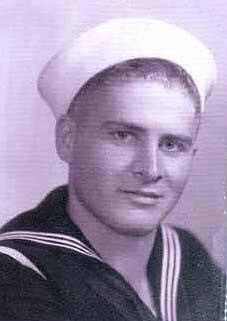BILLINGS — There are 430 missing servicemembers from Montana whose families are awaiting answers, according to the Defense POW/MIA Accounting Agency (DPAA).
On Saturday in Billings at the DoubleTree Hotel, the DPAA met with some of those families.
"(My cousin) was in the Army Air Corps. He was one of the very first ones that was taken prisoner,” said William Sivelle, a 98-year-old WWII veteran, on Saturday.
- IceBox Ice Cream Truck in Great Falls
- Video: Landspout tornado in Montana
- KRTV says farewell to Maggie Reilly
- Storm damage in Monarch and Neihart
It’s been more than 80 years since Sivelle last saw his cousin Richard.
"I would think probably 1938," said Sivelle.
Richard was taken prisoner in the Philippines by the Japanese during WWII at just 19 years old.
"The last report we have of him, he had gone to a hospital with dysentery, and that was in Manila," Sivelle said. "But he could have been part of the march."

Sivelle fears his cousin may have ended up on the Bataan Death March that resulted in upwards of 18,000 prisoner-of-war (POW) deaths.
He searched tirelessly while he was stationed in the Philippines during WWII for any sign of Richard.
"I tried everything I could do to locate the camp numbers and so forth that he was in. But they were all done away with,” Sivelle said. "We had to go to Luzon. I tried to look. I figured that was the only other airport other than Manila in 1942."
Sivelle is joined by hundreds of Montana families awaiting answers, which is why the DPAA has been working to provide closure for people like him since the 1990s.

"I've always had that interest and wanted to help give answers to those families who had loved ones that did not return,” said Charla Marshall, the deputy director of the Department of Defense DNA Operations at Dover Air Force Base in Delaware, on Saturday. "We started collecting samples from family members in 1990. So ever since then, we've just been doing regular collections at family updates like this. So that database has been growing over time."

In 2022, the family of Glendive WWII Army Corporal Franklin Bennett got the answers they had long been searching for.
"It’s a completion of the journey, no man left behind,” said Linda Raney, Bennett's niece, in January 2023.

The remains of Herman Schmidt of Sheridan, Wyoming were identified last January. Schmidt was aboard the USS Oklahoma in Pearl Harbor on Dec. 7, 1941, when the base was attacked by the Imperial Japanese Navy Air Service.

Discoveries like these are all thanks to the DPAA's mission to bring home our servicemen and women who made the ultimate sacrifice.
"My grandfather was in World War II and I've always had an interest in what he did and how he served. And I always thought, 'What if he hadn't come home?'" Marshall said. "We work really hard every day. We have over 115 scientists who are dedicated to this mission, and we really just want to do the best we can to provide answers to family members and to provide closure. It's very important to us."

The DNA testing of remains takes place at Dover Air Force Base, along with a lab in Omaha, Nebraska and Honolulu, Hawaii. Marshall helped develop the method for remains identification.
"As time goes on, the cases almost get harder and harder. So we were developing new technologies to help get DNA from those most challenging remains,” Marshall said. "We're now doing SNP analysis that allows us to expand our pool of family reference sample donors. The identifications will definitely grow over time, and the SNP analysis will give us a very strong statistical support result. So that'll be even more powerful than the tools we have now."
They’re constantly working to advance their methods—something Carrie LeGarde, a Montana native, said is crucial.
"The work that we do, we're doing because we made a commitment that we would bring all service members home and return them to their families,” LeGarde said on Saturday. "I think it's an important mission. I love being a part of it, and I think that that's just really important to be able to give that to those families."

Saturday's meeting at the DoubleTree was a time for these families to come together and learn what is being done to find their missing loved ones.
"These meetings are really important to be able to talk to the families. For myself, as an anthropologist working in the laboratory, I don't get that opportunity very often, so I love to do these," said LeGarde. "But we also can't do our jobs without the families being involved. So it's important for them to come to and be a part of the process."

It’s all one big group effort to finally bring the brave men and women home.
"I could never figure out why they couldn't find him," Sivelle said. "I just hope we get some word, just as to where he was buried."
To learn more about the DPAA's meeting in Billings, click here.





